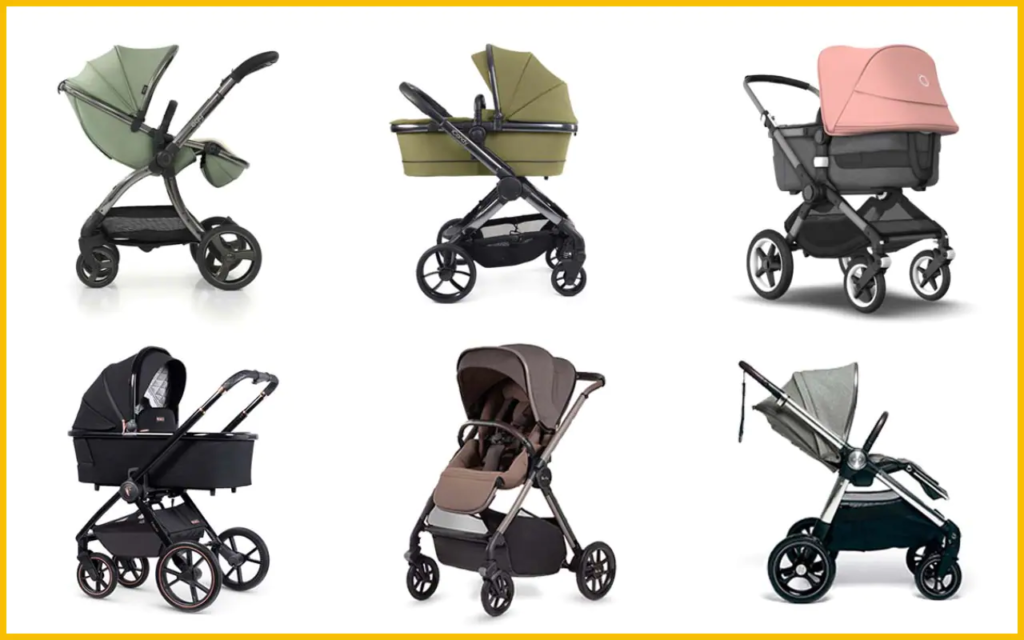Pram or Stroller for Newborn – Parents find prams and strollers to be beneficial from the moment their child is born and use them for a respectable amount of time—at least a few years! Although the terms “prams” and “strollers” are frequently used interchangeably to refer to infant products, historically they were extremely distinct from one another in terms of both use and function as well as design.
The ability to lie down versus sit up straight is the main distinction between a pram and a stroller. [Pram or Stroller for Newborn]
In essence, a pram is a flat bed on wheels where you may place a little infant and transport them outside without the burden of carrying them, especially when they are asleep.
While a stroller is a push chair (also known as a buggy), which enables the infant to sit upright and look around and experience the world! Think of a stroller with wheels.
When the baby is under four months old and unable to sit up by themselves, the lying-down aspect of a pram is quite helpful.
When the infant learns to crawl or sit up on their own, they appreciate the stroller more, especially on any outings out from the house!
Having said that, the majority of stroller and pram manufacturing companies now provide a hybrid product, which is a baby travel item that has the ability to function both as a stroller and a pram.
Consider a chair back with a reclining feature! Yes! I’m done now! You can get a stroller with a flat or almost flat back reclining feature that enables you to either let the baby sit upright for strolls outside or let the infant lie down and use the stroller as a pram!
Prams and strollers are very distinct from one another if the product is not a hybrid (pram and stroller). Although you can transport your kid around in both a pram and a stroller, there are significant differences.
Below, we’ve highlighted the key distinctions between a stroller and a pram:
Design:
A stroller is made for slightly older babies, but a pram is made for newborns who can lie down or sleep in it. When your child is older, he or she will be able to sit in a stroller that can readily absorb tiny jerks while maintaining a steady neck.
Safety:
Because prams lack a harness and safety restraints, using one unattended can be dangerous. In contrast, a stroller has a safety belt and a harness. Use a stroller with a 5-point harness instead.
Weight:
Typically, prams are large, heavy, and difficult to transport. Strollers, on the other hand, are portable, light, and convenient to transport. Carrying strollers on public transportation is also simple.
Chair:
In contrast to strollers, where the chair is lower to the ground, prams have taller seats.
Synonyms:
A perambulator is referred to as a pram. Prams are referred to as baby carriages as well. Strollers are known as pushchair or buggy.
Appearance:
A stroller resembles a chair on wheels, whereas a pram resembles a carriage on wheels.
Cost:
Strollers cost more than prams because they offer more functions.
It is not possible to compare a stroller to a pram or vice versa. Both have advantages and disadvantages. Simply choose the travel option that best meets your needs.
There are hybrid strollers and prams on the market that combine features from both types of devices. These hybrid models are a better choice because they are made with your baby’s comfort at various stages of development in mind.

